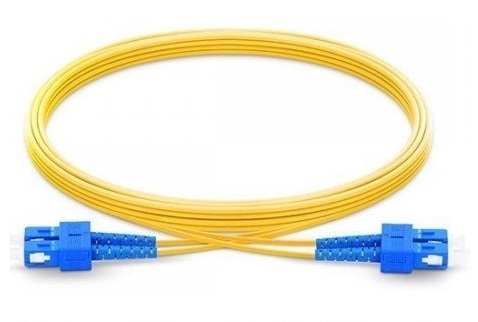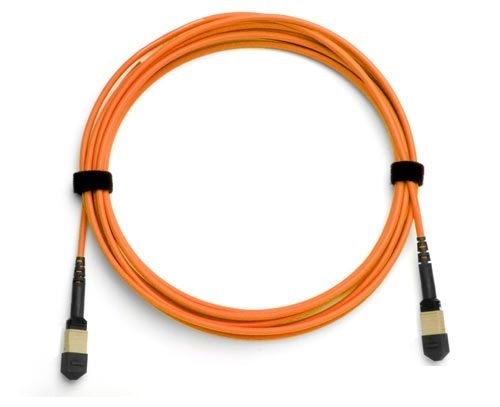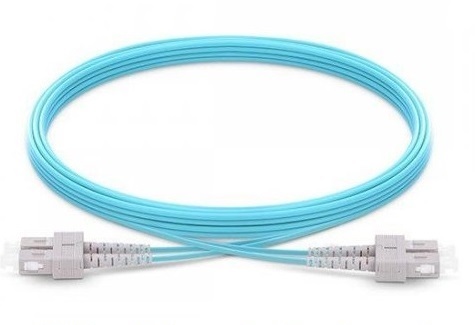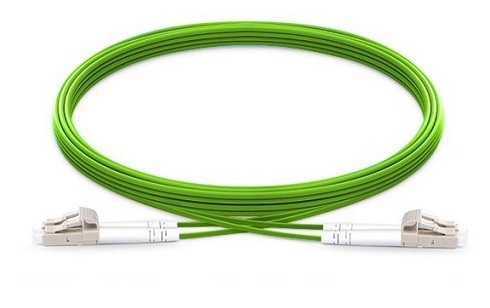Different types of fiber optic cables
As discussed in previous lessons, fiber optic cables use pulses of light instead of electric signals to send and receive data. Fiber optic cables use transceivers on each side of the fiber optic cable to send and receive light signals.
Generally, fiber optic cables are classified in to two categories; single mode optic fiber (SMF) cables and multimode optic fiber (MMF) cables.
• Single-mode Fiber (SMF) uses a single ray of light to carry data transfer over long distances.
• Multi-mode Fiber (MMF) uses multiple rays of light simultaneously with each ray of light running at a different reflection angle to carry the data over short distances.
Main structural difference between multi mode fiber (MMF) and single mode fiber (SMF) optic cable is the diameter of the glass core. The diameter of multi mode fiber (MMF) optic cable is larger than single mode fiber (SMF). Small diameter glass core of single mode fiber (SMF) has very low signal degradation and thus single mode fiber (SMF) can carry light signals over long distances when compared with multi mode fiber (MMF).
Multi mode fiber (MMF) and single mode fiber (SMF) cables can identified by their color. Generally, orange, aqua or lime green color is used for Multi mode fiber (MMF) cables and yellow color is used for SMF cable.
Different single mode fiber (SMF) types - OS1 and OS2
OS1 and OS2 are the different types of Single Mode fiber (SMF) cable types. OS stands for Optical Single-mode Fiber. Glass core diameter of Single Mode cable (SMF) is less than 10 µm (8µm - 9µm). OS1 type Single Mode fiber (SMF) cable has tight buffered construction, but OS2 Single Mode fiber (SMF) cable has loose tube construction.
OS1 type cable is typically used for campus LAN cabling and it supports up to 10 Gbps up to about 2km distances.
OS2 type cable is used for long distance cabling and it supports more than 10 Gbps for more long distances.
Usually, yellow color is used for Single mode fiber (SMF) cables. Following image shows an Single mode fiber (SMF) cable.

Different multi mode fiber (MMF) types - OM1, OM2, OM3, OM4 and OM5
OM1, OM2, OM3, OM4 and OM5 are the different Multi mode fiber cable (MMF) types. OM stands for Optical Mode. OM1 and OM2 fiber cable types are comparatively old type of optical fiber cables. OM5 is the latest one.
Following table shows the comparison between OM1, OM2, OM3, OM4 and OM5 Multi mode fiber (MMF) types.
| OM Type | Color | Core Size | Speed | Distance | Use |
|---|---|---|---|---|---|
| OM1 | Orange | 62.5µm | 1Gbps | 300 meters | LANs |
| OM2 | Orange | 50.0µm | 1Gbps | 600 meters | LANs |
| OM3 | Aqua | 50.0µm | 10Gbps | 300 meters | Campus networks |
| OM4 | Aqua | 50.0µm | 10Gbps | 550 meters | Data centers |
| OM5 | Lime green | 50.0µm | 100Gbps | 150 meters | Data centers |
As mentioned in above table, generally orange color is used for OM1 and OM2 type Multi mode fiber (MMF) cables. Aqua color is used OM3 and OM4 type Multi mode fiber (MMF) cables. Lime green color is used for OM5 type Multi mode fiber (MMF) cables. Following images show different colors of Multi mode fiber (MMF) cables.


